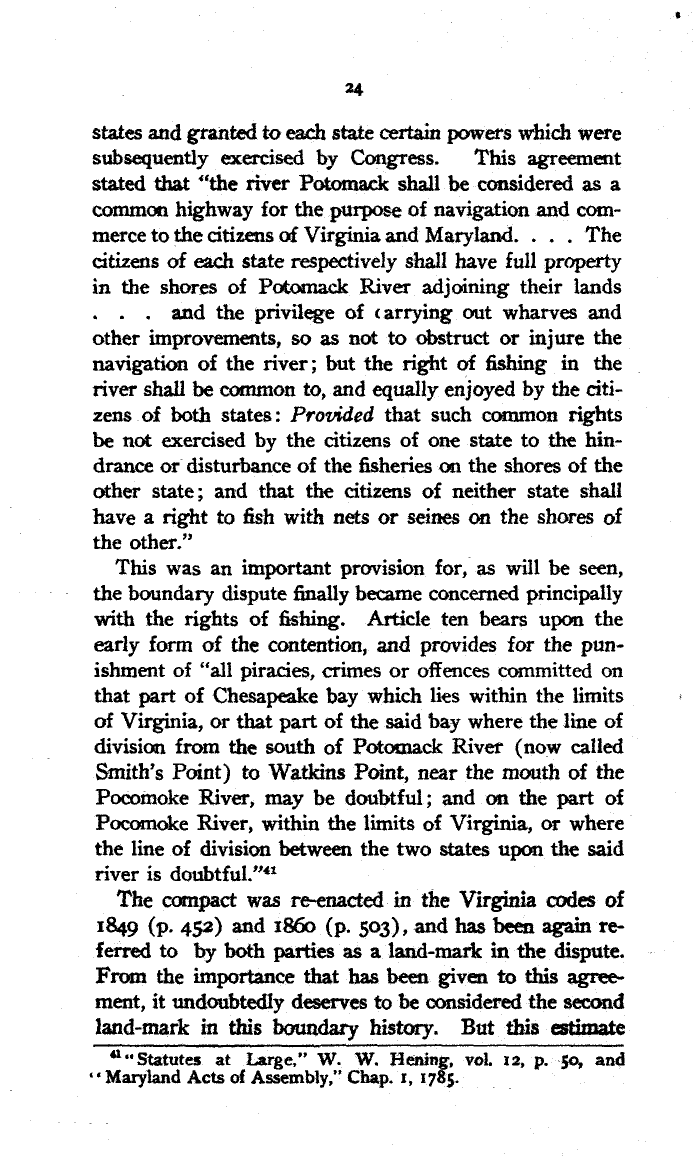| 24
states and granted to each state certain powers which were
subsequently exercised by Congress. This agreement
stated that "the river PotomaR;lc shall be considered as a
common highway for the purpose of navigation and com-
merce to the citizens oh Virginia and Maryland . . . . The
citizens of each state respectively shall have full property
in the shores of Pofiomack River adjoining their lands
, . . and the privilege of c arrying out wharves and
other improvements, so as not to obstruct or injure the
navigation of the river; but the right of fishing in the
river shall be common to, and equally enjoyed by the citi-
zens of both states: Provs.ded that such common rights
be not exercised by the citizens of one state to the hin-
drance or disturbance of the fisheries on the shores of the
other state; and that the citizens of neither state shall
have a right to fish with nets or seines on the shores of
the other."
This was an important provision for, as will be seen,
the boundary dispute finally became concerned principally
with the rights of fishing. Article ten bears upon the
early form of the contention, and provides for the pun-
ishment of "all piracies, crimes or offences committed on
that art of Chesapeake bay which lies within the limits
of Virginia, or that part of the said bay where the line of
division from the south of Potosnack River (now called
Smith's Point) to Watkins Point, near the mouth of the
Pocomoke River, may be doubtful; and on the part of
Poconoke River, within the limits of Virginia, or where
the line of division between the two states upon the said
river is doubtful."41
the compact was re-enacted in the Virginia codes of
I$49 (p~ 452) and 1860 (p. 503), and has been again re-
ferred to by both parties as a land-mark in the dispute.
From the importance that has been given to this agree-
ment, it undoubtedly deserves to be considered the second
land-mark in this boundary history. But this e
"Statutes at Large," W. W, Hem' ng VOL ta, p. -So, earl
•' Maryland Acts of Assembly," Chap. z, 1775I'.
|

